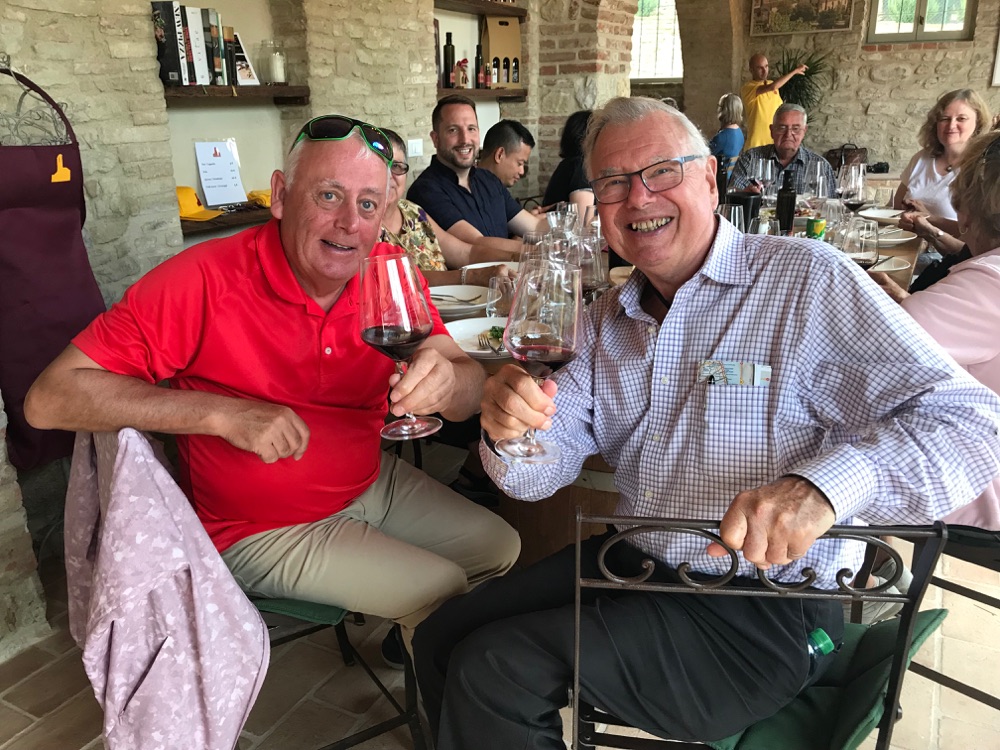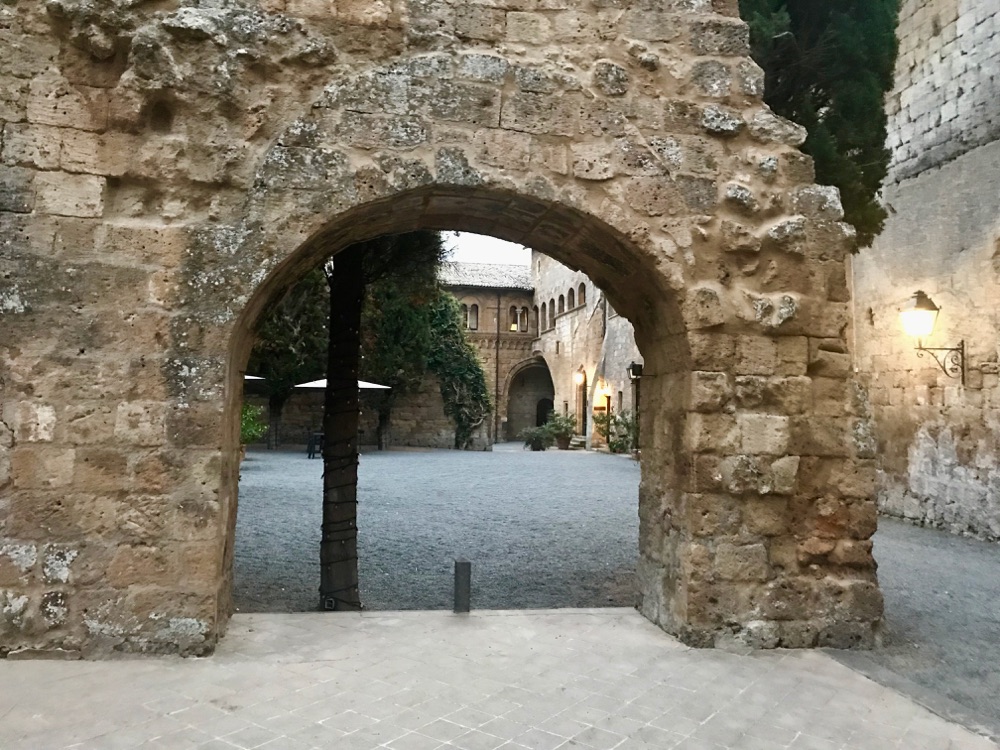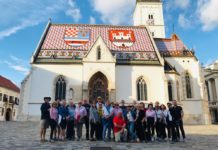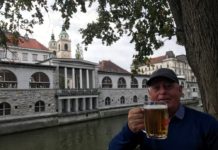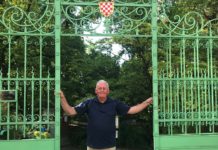To the sound of Claudio Villa singing Arrivederci Roma, we left the Eternal City in our maroon coloured coach and headed north to Umbria.
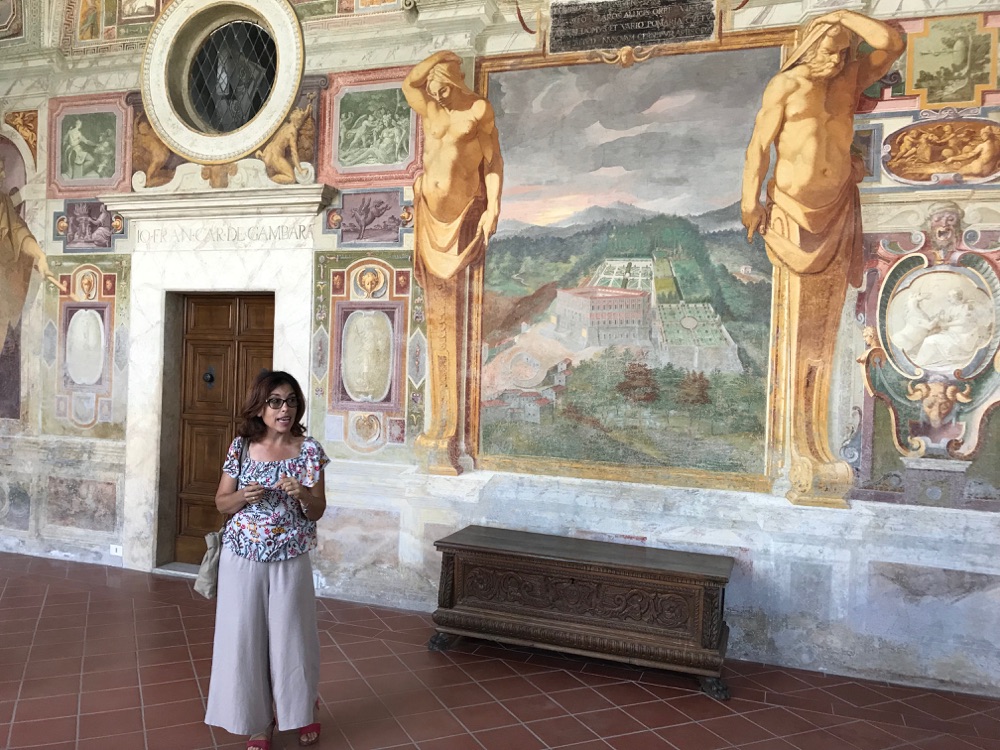
But first, we stopped on our way to visit the famous garden at Villa Lante in Bagnaia just outside Viterbo.
The garden dates back to 1566 and was commissioned by Cardinal Gambara in the Mannerist style.

Once through the entry gates, we saw the Pegasus fountain with the winged-horse rearing at the centre surrounded by angels.
The garden is old and some of the stonework is crumbling in parts but overall this famous Renaissance garden is still very impressive with its rising series of terraces, each level offering an imaginative feature.
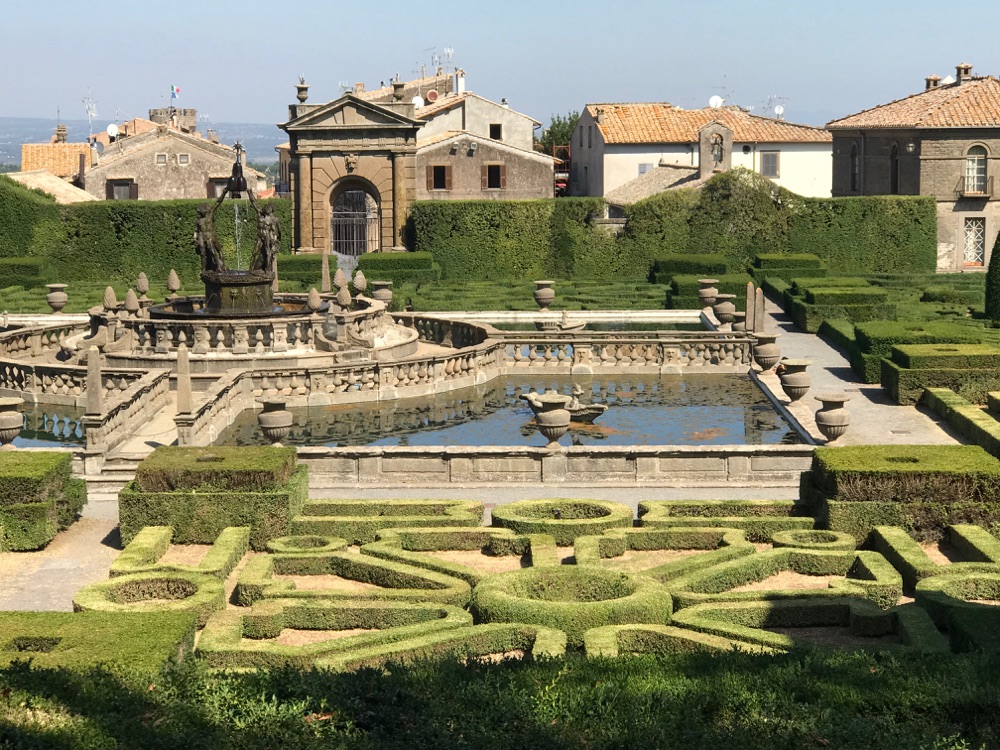
As you climb stone steps, moving higher and higher, you get a better view of the formal geometric-patterned parterres on the first level. Like many gardens built by cardinals in the 16th century this one was also intended to wow and let visitors know about the importance and power of its creator.
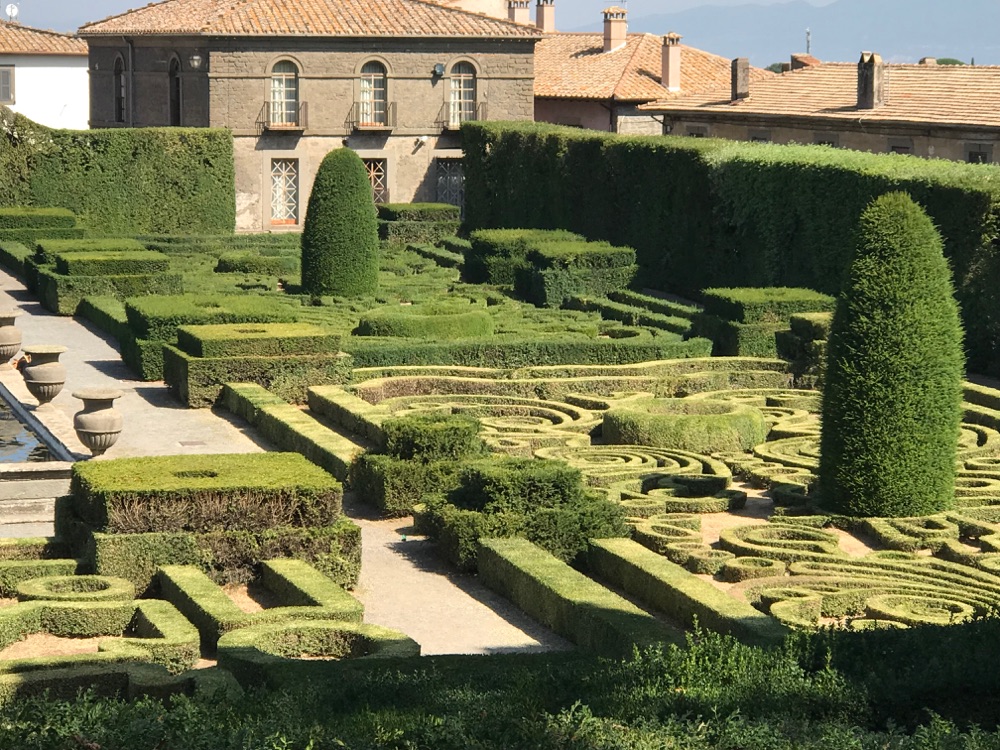
On the way up the garden, you pass a Little Lanterns fountain with dozens of small candleholder-like spouts. Higher up, there is long stone table with a central water canal. This leads on to a striking fountain featuring two giant sculpted lounging river gods.
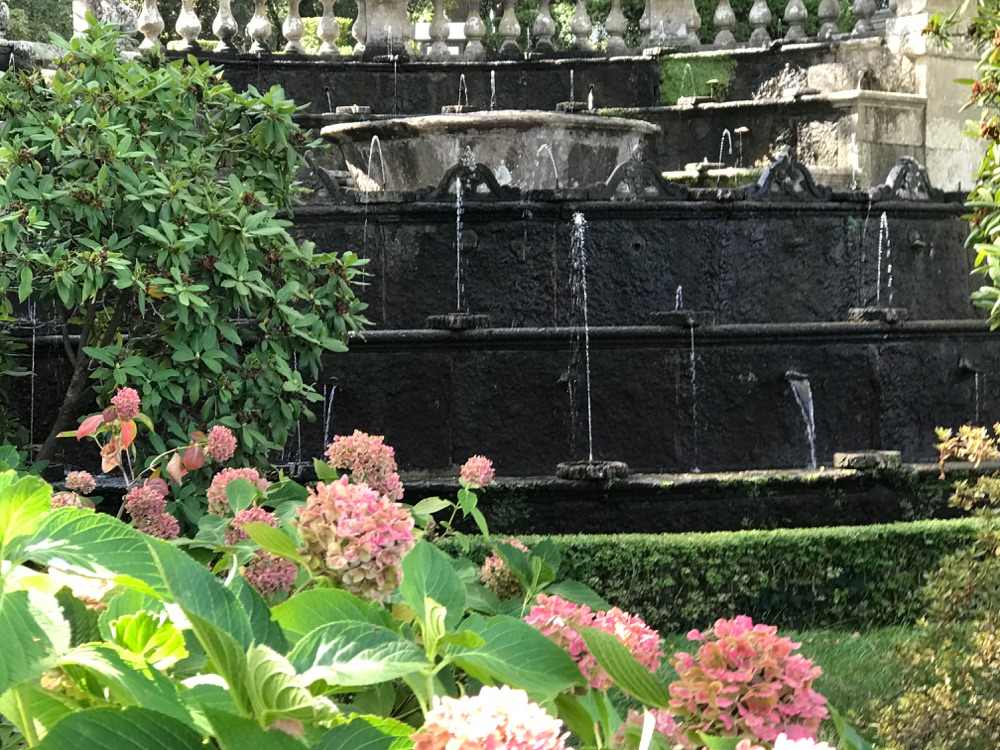
Around the corner and continuing up the garden steps, there is a long water cascade than runs down the centre of the staircase.
It was designed to force the water into a series of raised wave patterns, creating the impression of a chain.
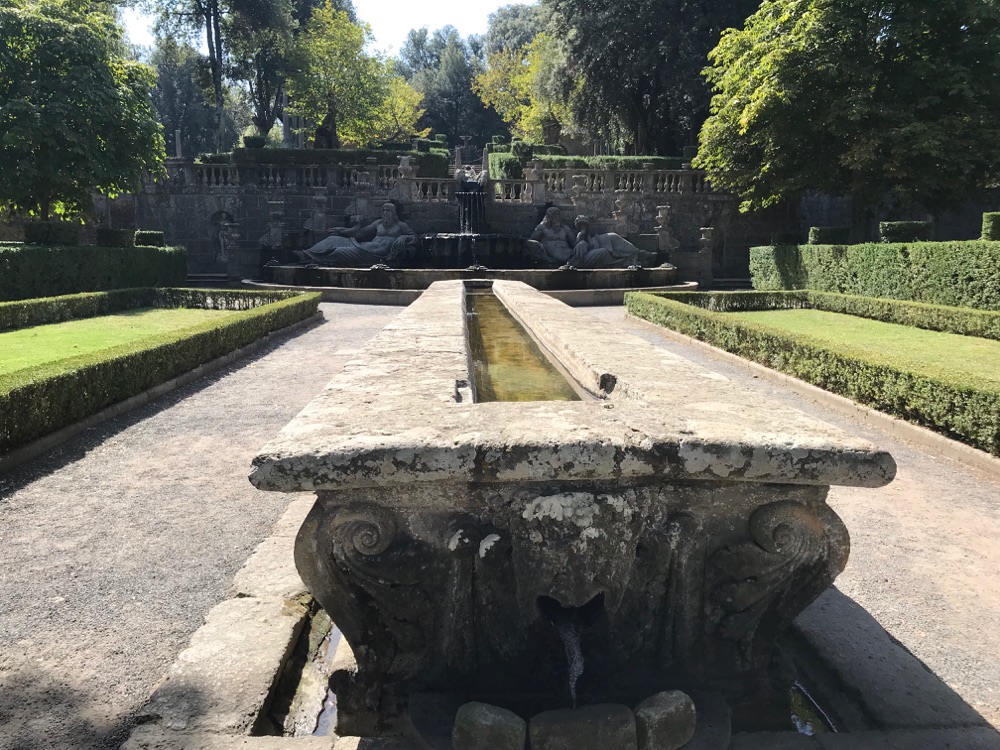
At the top of the garden, we found the Fountain of the Deluge, a pretty green grotto heavily decorated with maidenhair ferns and a pond covered by bright green by milfoil.
From Villa Lante, we moved into Viterbo to visit the Pope’s Palace (Palazzo dei Papi) that dates back to the 13th century. It is one of the most important historical monuments of the town. We learned a little about the origins and shaping of Pope-choosing conclaves in a place which was the centre of authority and influence back in the 1200s.

From here, we walked into Viterbo where we settled into a pleasant courtyard for lunch. The tiny square was called Piazza della Morte but this dark name didn’t affect our appetite and we enjoyed a splendid pasta lunch with wine.

After lunch, we headed to Orvieto for a tour of the town and a visit to the magnificent cathedral with its dazzlingly colourful and sculpturally ornate facade, making it a rival in grandeur to the duomos in Florence, Sienna and Milan.

From Orvieto, we crossed the valley to check into our hotel, La Badia di Orvieto, a former monastery which has spectacular views of Orvieto and the surrounding countryside.
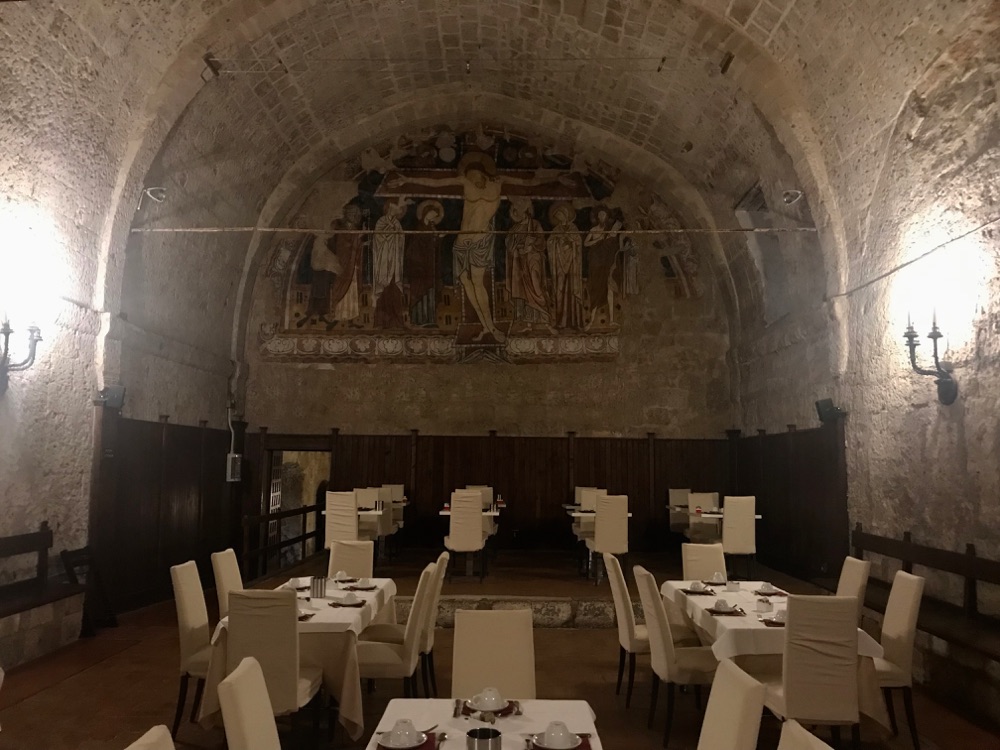
The breakfast room at the hotel was very reminiscent of the room in which Leonardo’s Last Supper mural can be found in Santa Maria della Grazie in Milan. On the wall was a fresco, only this one was of the crucifixion.

The next day, we first headed to the village of Bomarzo to tour the quirky sculpture garden, Sacro Bosco, something called the Monster Garden because of its grim images of monsters, giants and other ove-sized creatures and forms.

The story contained in each art work is a poignant one with a deep meaning meant to make you consider carefully your choices in life. Fortunately, our guide, Iza, was excellent at explaining each of the installations and their meaning.
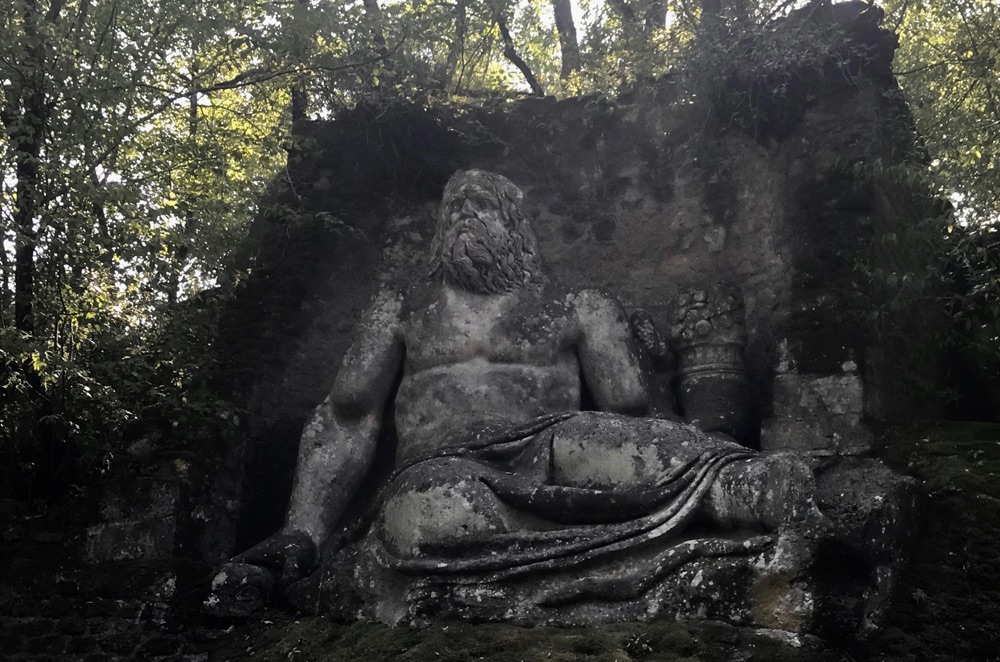
Sacro Bosco 
Sacro Bosco sculpture 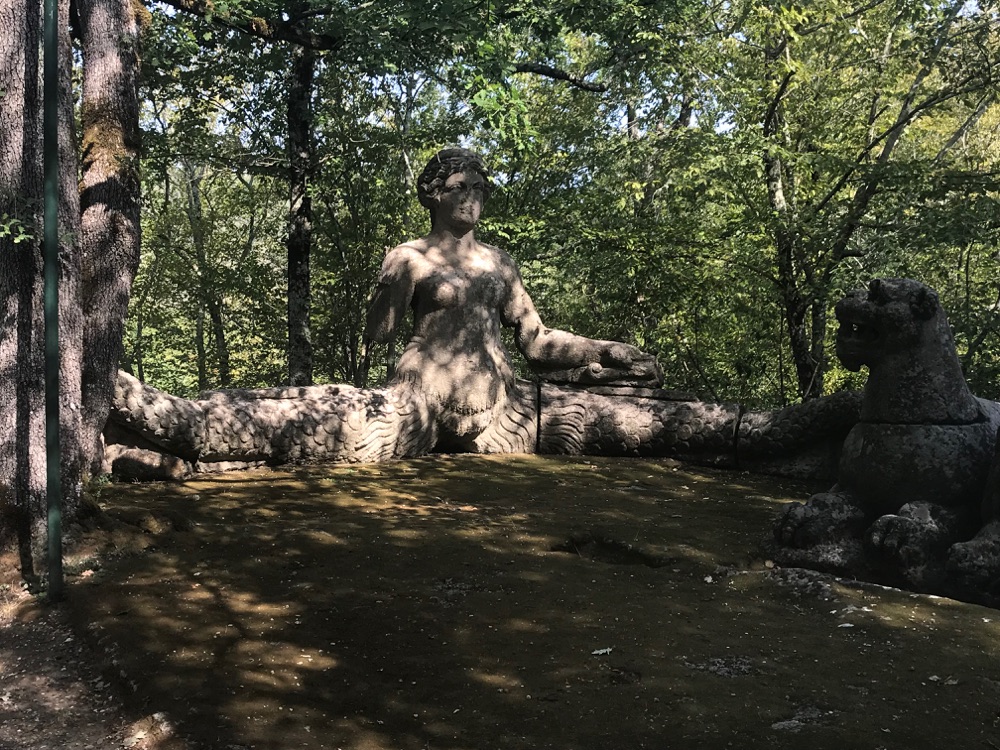
Sacro Bosco
We spotted a young couple with two little girls touring the garden. The youngsters were running with maps in hand, looking for the various statuary, some of which was grotesque.
They seemed completely unfazed and very happy to be having fun. Turned out, twas from they were from Vancouver and their parents, a lovely young couple, had taken them out of school specifically to visit Italy and see such amazing sites as the Sacro Bosco.

From the garden, we next had a very special treat – going to the beautiful country house of our guide, Max, whose partner, Alberto, and Alberto’s sister, Patricia, entertained us all magnificently with a superb al fresco lunch.
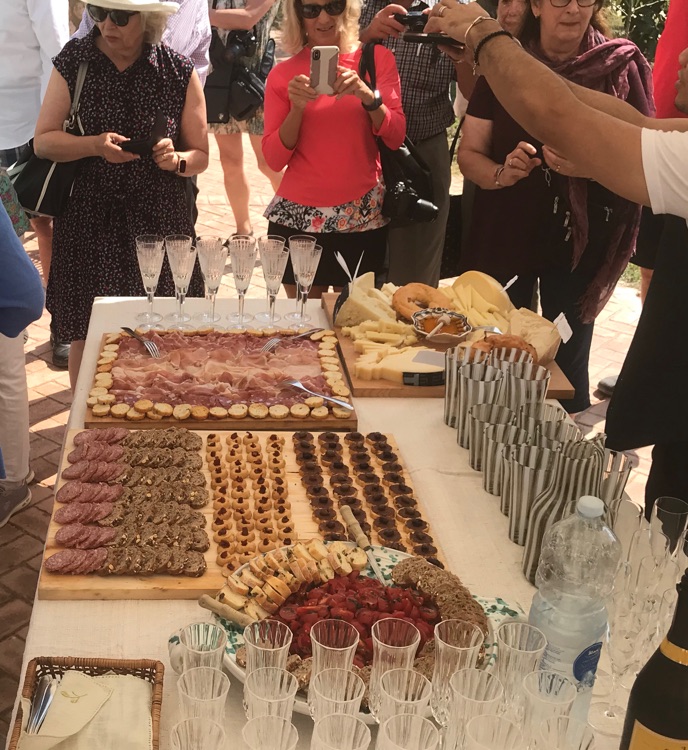
From the lawn, we had delightful views over rolling acres of olive trees and on the hill above the olive trees sat the beautiful town of Lugnano.

It was a truly magical afternoon. Some of us walked up to Lugnano along a rough woodland trail and then got to see the surrounding countryside from the highest point in the town. We also toured the local museum and then wandered back to Max and Alberto’s country house where we had more treats before going back to our monastery retreat.

The next morning, we headed out, first to visit the lovely town of Spello, which we walked from bottom to top, and then we went for lunch and wine tasting to the evolving winery of Chiesa del Carmine.
This winery is relatively new and still evolving but I found the communication skills of the staff very impressive and I seem to learn more at this wine tasting than any I had been to before.

We tasted four wines and loved them all and came away with bottles of our favourites to drink at our new hotel in Perugia.
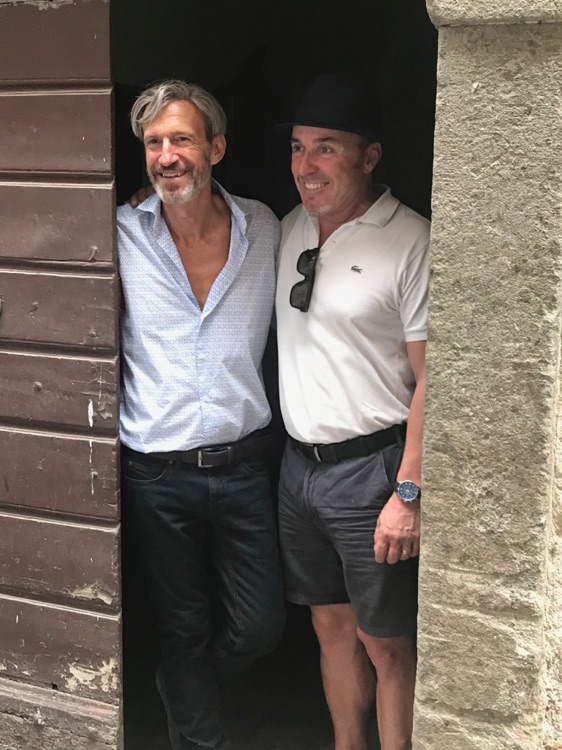

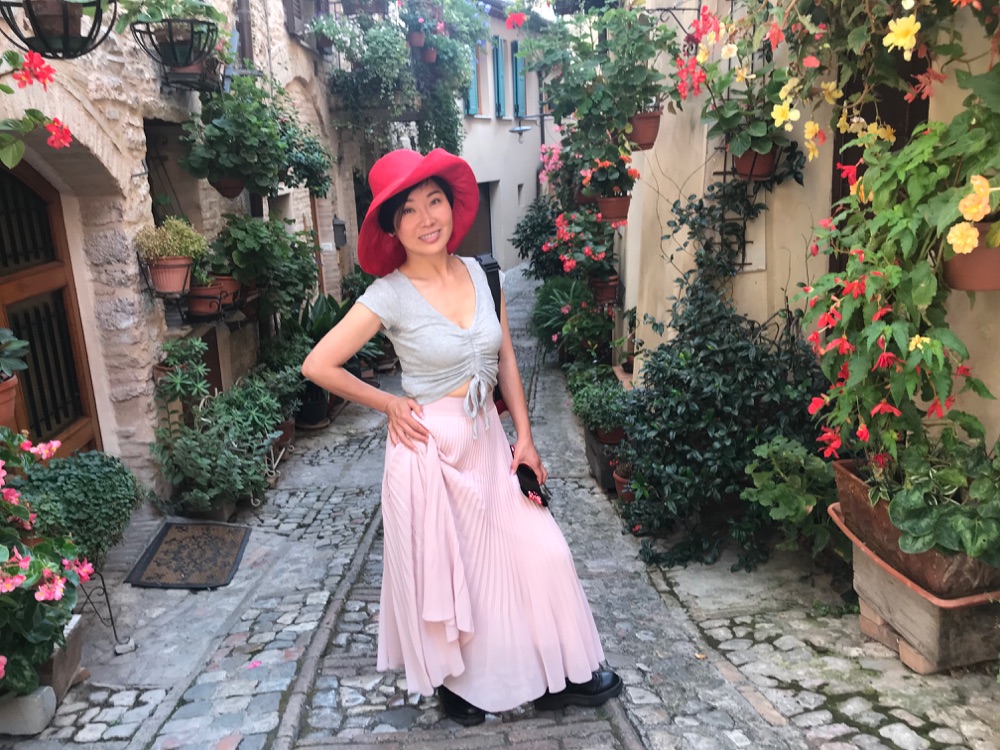
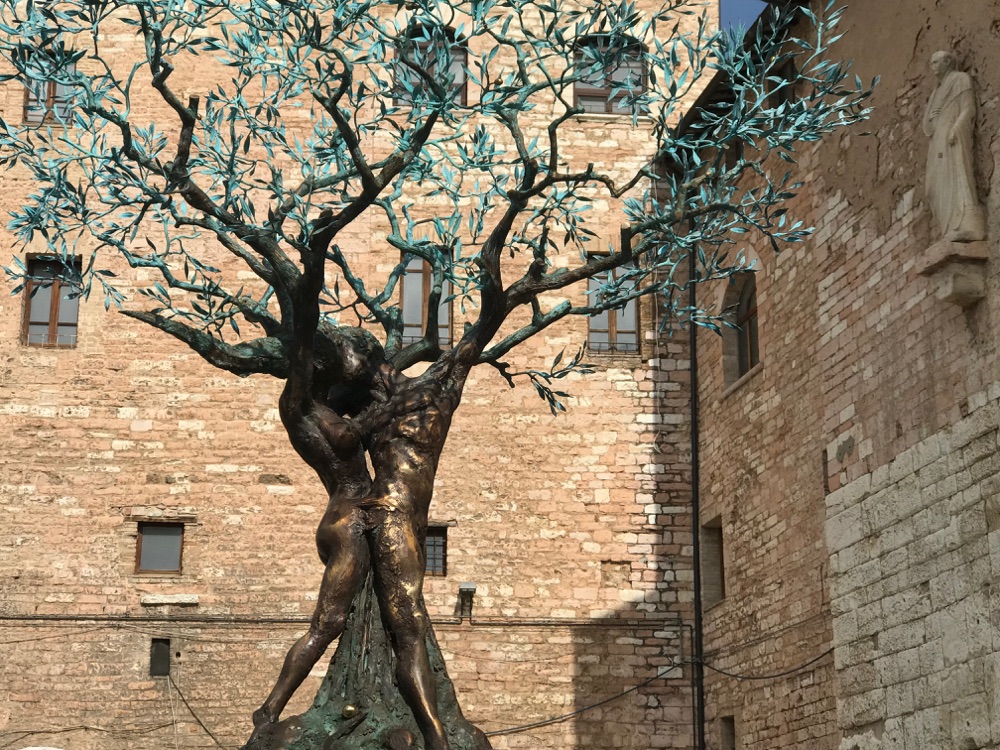
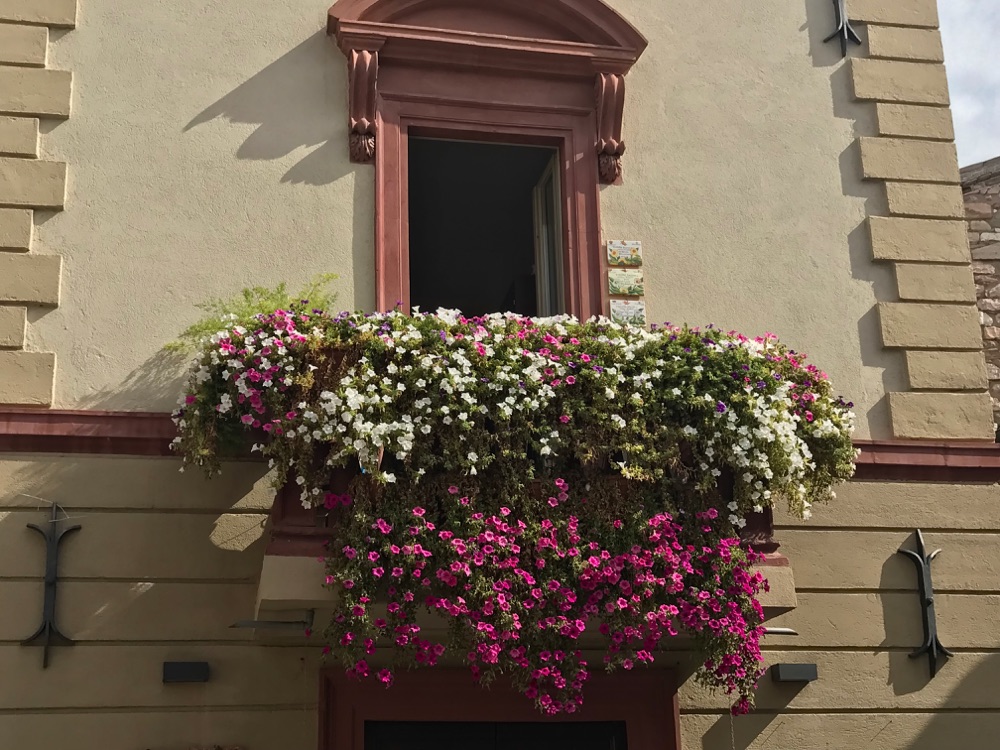
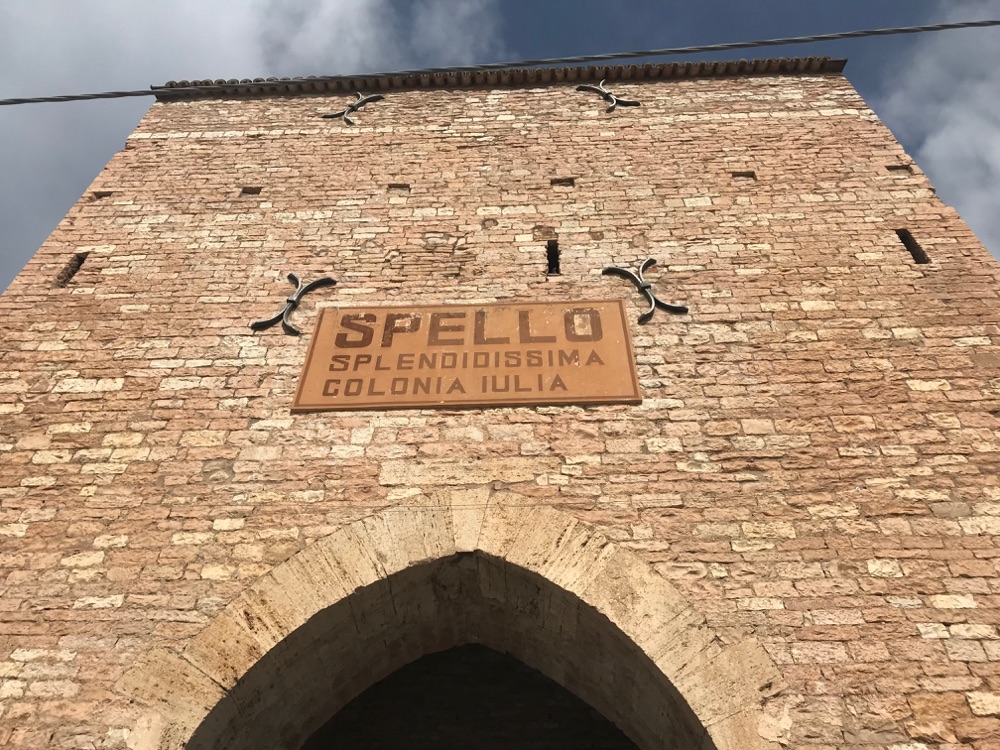
The grounds of La Badia di Orvieto, a former monastery
